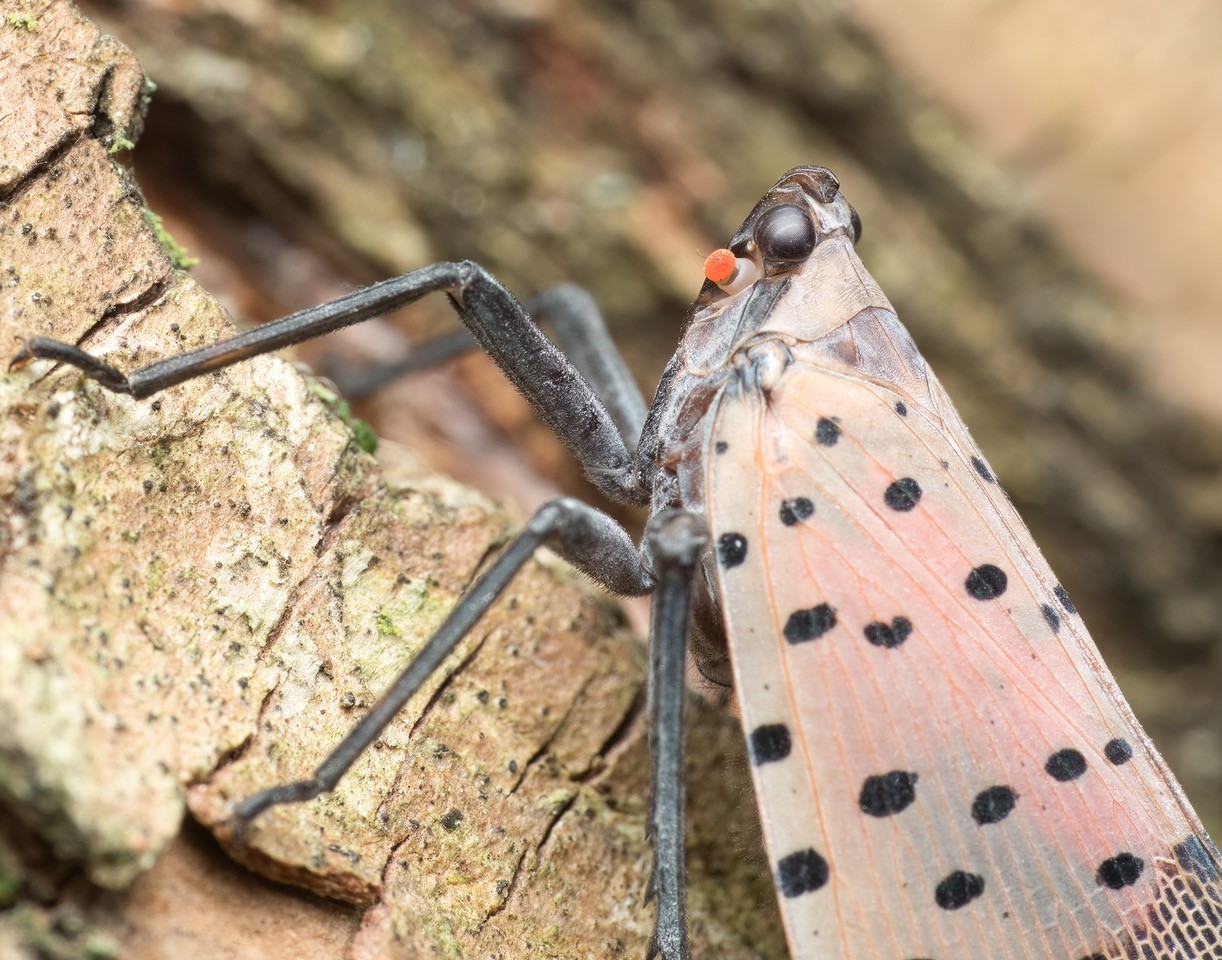You may remember the first day of the semester — the Chaney-Goodman -Schwerner Clock Tower stood tall in the distance as you ran across the Quad to your first class. A breeze hit you as you walked by the fountain, overlooking the Manhattan skyline. Unfamiliar, yet curiously spotted moths chased each other all across campus. If you looked closer, though, you might have seen that they weren’t moths. Those were spotted lanternflies, an invasive species taking over the city.
Native to Vietnam and China, the presence of this insect was confirmed by the U.S. Department of Agriculture in 2014, suspected to have arrived in Pennsylvania by hitchhiking aboard a shipment of imported stone just a couple of years prior. In 2019, Pennsylvania State University estimated $324 million that could be lost annually if the spotted lanternflies are left unmonitored, as published in a potential economic impact report endorsed by the Pennsylvania Department of Agriculture.
“I think it’ll be a major and very visible disruption. Practically it would raise costs and lower yields for fruit tree growers and grape growers,” Dr. Mitchell Baker, distinguished Biology Professor and entomologist here at Queens College said. “It’s gonna make some trees more disease vulnerable because the feeding makes this really good environment for fungi bacteria, due to the excretion of honeydew after feeding.”
The spotted lanternfly uses its mouthpiece to pierce and suck the sap of various plant species. While its first preference is the Tree of Heaven, it settles for crops important to Northeastern industries, such as grapevines, maple trees, hops, and apples. To understand how integral these are to New York’s economy, the New York Department of Agriculture estimates the state produces more than 30 million bushels of apples per year and grosses roughly $53 million annually from grape harvests alone.
New York City Parks & Recreation has been active in their response to the lanternfly arrival. As part of their Tree Risk Management program, designed to meet industry standards set by the International Society of Arboriculture, Parks & Rec has been proactively inspecting and monitoring concerns in trees around the city. This includes partnering with Trees New York, a volunteer-based organization tasked with helping city efforts to prune branches deemed problematic.
“We of course encourage volunteers to look for and scrape egg sacks,” arborist Sam Bishop at Trees New York said. “Especially starting egg-laying season.”
When asked where the branches go after pruning, Bishop responded, “Sometimes it’s taken for composting, other times it just goes in the garbage.”
While the removal of egg masses is important to do when you see them, it’s just one component in the grand scheme of controlling the spread. The state of Pennsylvania frequently issues quarantine orders to ‘prohibit the movement of any SLF living stage’ including the movement of lumber, construction waste, and decorative grapevines.
When asked if Dr. Baker sees New York implementing this tactic in the near future, he agreed that it’s “Probably the most important thing to do,” but added, “I know that we were not at all effective at slowing down the spread of emerald ash borer, which also was a species you especially didn’t want to transport [with] firewood any distance.”
However, it isn’t all doom and gloom. “Species are being released all the time and the vast majority don’t survive,” he began, “…they can be pretty disruptive, but over time, the local community of predators and diseases, parasitoids, all evolve to recognize them as a resource, and end up limiting their population.”
Whether or not this will happen with the spotted lanternfly is hard to tell, but the University of Delaware is currently studying wasps and egg parasitoids from the lanternfly’s native region to determine whether it’s safe to introduce them into our ecosystem as a form of biological control.
“Not every introduction is the end of the world, but our landscapes are a lot more disturbed than a lot of kids growing up in the city [realize]. Our forests are drastically different than what they used to be,” Dr. Baker said. And while the spotted lanternfly introduction is indeed not the end of the world, it’s just a matter of seeing how different of a world it will be with a new species in our forests.











